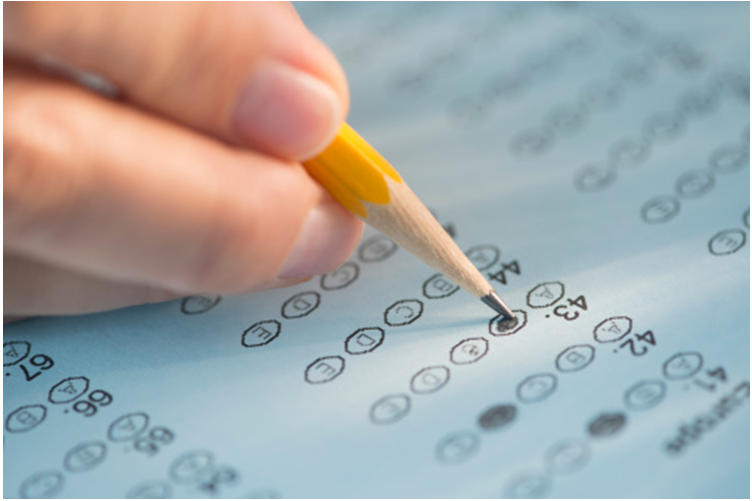JAB plans to abolish JEE Main Exam from IIT Admission Process
The IIT Joint Admission Board (JAB) is planning to do way with the JEE Main exam for IIT aspirants. The proposal has already been sent to the MHRD but the discussion on the new entrance exam is still due to take place in the meeting of all the IIT Directors and Chairmen of JEE Advanced exam on February 20, 2016 in Hyderabad.
If the proposal gets accepted, it might get implemented from 2017-18.
Earlier, IITs used to have one-step entrance exam called IIT JEE – which used to be much more competitive than the present exam. Ever since the 2-step IIT entrance exam has been instituted, many IITs have been writhing to get back to the old system.
Till 1996:
IIT JEE used to have three exams (one each for Physics, Chemistry and Maths) – which were conducted over two days. Each paper was of three hours duration.
In 1997:
In 1998:

In 2000:
In 2013:
China and Japan already follow a single entrance exam after school for university admissions too. Let’s delve a bit deeper into the present IIT admission procedure and the single entrance exam and see what might be in store for us:
Role of JEE Main and Advanced in IIT admissions
On April 4, 11 lakh applicants took the Joint Entrance Exam (JEE) Main 2015 exam in the offline mode. Additional 1.8 lakh students took the online JEE Main exam on April 10 and 11. Out of these, only Top 1.5 lakh students were allowed to sit for the JEE Advanced 2015 exam – which was conducted on May 24.
Only the students who were among the Top 20% in their respective education boards and score than the declared cut-offs for JEE Main 2015 (which varied from category-to-category) were allowed to sit for the IIT entrance test.
JEE Main conducted by the CBSE is quite different than the JEE Advanced exam which is conducted by the IITs. Here are some major differences between the two:
Objective
JEE Main serves as entrance exam for BE or B.Tech courses of NITs, IIITs, other CFTIs and state-funded engineering colleges – as well as a screening test for the JEE Advanced exam.
JEE Advanced exam is conducted exclusively for admission to the IITs.
Exam Format
JEE Main draws its exam format from the previously-held AIEEE. It conducts two papers:
- Paper 1 for B.E. and B.Tech course aspirants, and
- Paper 2 for B.Arch and B.Planning course aspirants.
Students may appear for one or both of the exams. IIT aspirants have to take Paper 1 exam and if they qualify it, they have to register for the JEE Advanced exam.
JEE Advanced
JEE Advanced has two papers too – Paper 1 and Paper 2 and students have to appear for both of them. Those who are interested in ‘Architecture’ courses, have to qualify both these exams as well as clear an additional exam conducted by the IITs called the Architecture Aptitude Test (AAT).
Find more details about JEE Main and JEE Advanced here.
Only 2 chances for IIT aspirants
One can sit for the JEE Main exam for three consecutive years but can appear for JEE Advanced exam only twice – in the year which they appeared for Class 12 board exam and in its very next year.
Syllabus and Type of Questions
The JEE Main exam syllabus is same as the CBSE Class 11 and 12 Physics, Chemistry and Math syllabi. The JEE Advanced syllabus includes a few extra topics.
Find free study material for IIT entrance exam here.
Generally speaking, if you have learnt your formulae feel and have adequate speed, you can easily solve the JEE Main exam. But in JEE Advanced exam, you need in-depth knowledge of the subjects and understand the application of concepts well.
That said, many experts claim that the present-day JEE Advanced exam is the dumber version of the old and glorious IIT JEE. It has often been alleged that the coaching centers teach tricks (instead of helping students understand the concepts) to propel half-baked students into the gates of the IITs and bringing down the overall quality of students in the prestigious institutions of India.
In a meeting held at IIT Guwahati in September, 2015, the JEE Apex Board (JAB) had discussed whether the two-step entrance exam system should be scrapped for the IITs.
Points in Favor of Single Entrance Exam:

- Many IITs fund the 2-step entrance exam time-consuming and cumbersome. “The probability of a candidate getting into an IIT is far less than an NIT. The whole process wastes a lot of time of the IITs unnecessarily”, said an IIT professor.
- According to JAB, conducting two exams within a span of one and a half months is only burdening IIT aspirants unnecessarily.
- IIT official argue that due to the time constraint, IITs is only able to conduct three rounds of counseling in the present system. If a single-entry test is allow, there will be more time and number of counseling rounds can be increased.
Points in Favor of the Present 2-Step Admission Process
- In the existing system, only 1.5 lakh students are allowed to sit for the JEE Advanced exam (meant for IIT admissions.) Reverting to the old system means the competition will shoot up and anyone will again be able to sit for the exam. Before 2013, 10-12 lakh students used to appear for IIT JEE exam.
- The difficulty level of JEE Advanced question paper may shoot up. In 2013, IITs were toying with the idea of including subjective questions in the IIT JEE exam format – to reduce the chances of ‘guess work’ by students. One of the professors said, “Multiple Choice Questions (MCQ) allow you a chance to score by the stroke of luck. Coaching institutes these days teach students to arrive at the right answer using elimination method – which also means that such students are not very strong with concepts.” If a single-level entrance exam is re-introduced the paper format might get changed too which might get implemented from 2017.
- The coaching institutions may have to revamp their teaching pattern again – and many may fail to stand up to the challenge. IIT aspirants who join coaching will have to be extra cautious in choosing the right coaching center for themselves who can actually help them to clarify their concepts and develop real understanding of their applications.
IIT alumni and academic experts believe that it does not really matter whether students take a single-step or two-step admission process. Students can adjust to both the scenarios – if given proper time and structure but any changes in entrance exams should be done in a step-by-step and smooth manner. The experts also say that the government should focus more on facilitating the IITs to achieve their full attention – instead of trying to regulate them and hinder their development process.
- Excited
- Fascinated
- Amused
- Bored
- Sad
- Angry


